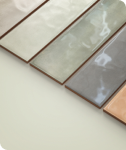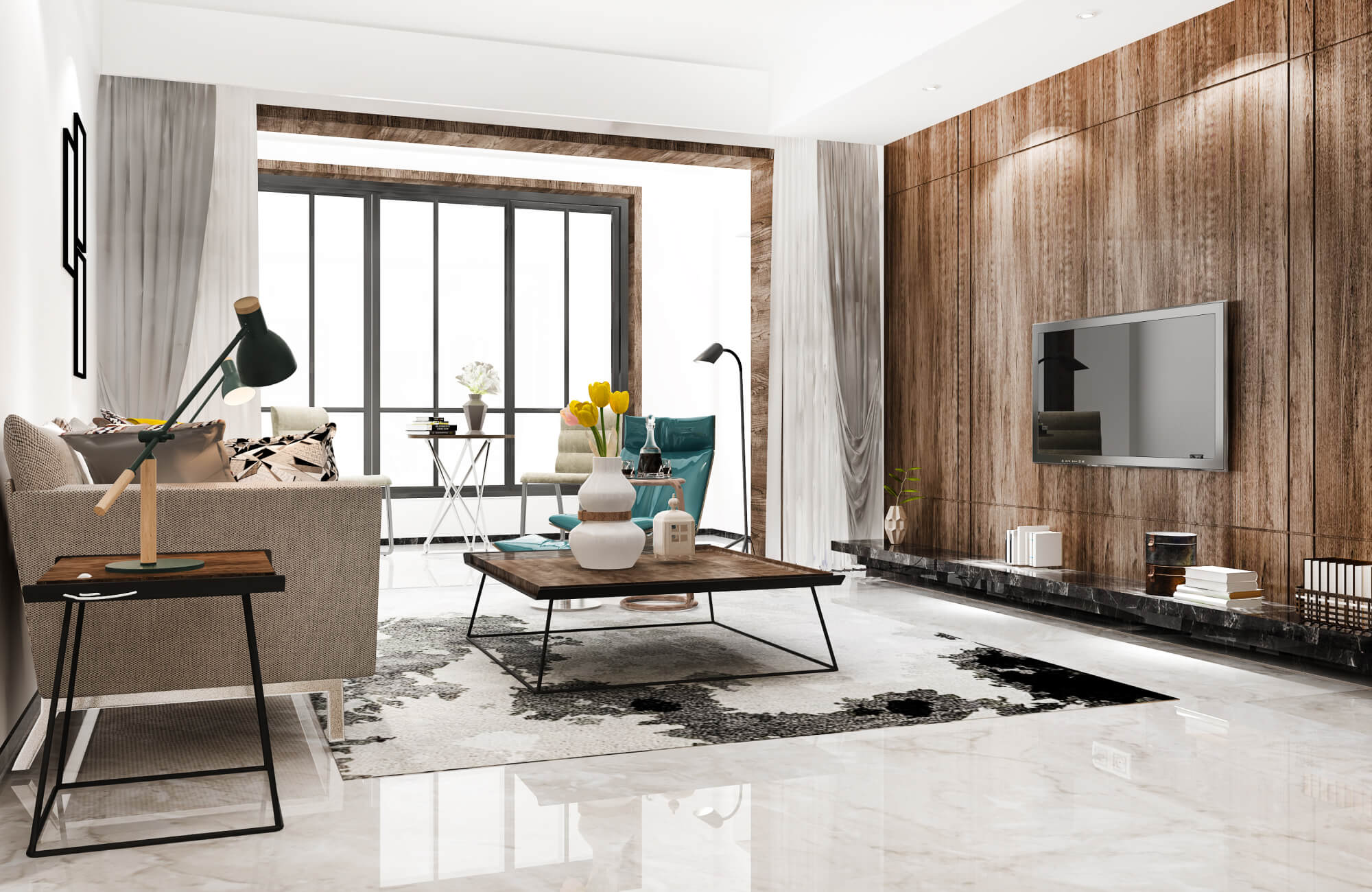Wood look tile has gained significant popularity in recent years, offering a visually appealing alternative to traditional wood flooring without the associated maintenance concerns. This innovative flooring material replicates the natural beauty of real wood while providing exceptional durability and resistance to wear and tear. To delve deeper into its benefits and address common concerns, our expert team will share insights into why many are opting for this robust option.
One of the most common questions that arise among potential buyers is the susceptibility of wood look tile to scratching. Unlike real wood, which can be prone to scuffs and scratches over time, wood look tile is engineered to provide superior scratch resistance.
Factors Affecting Scratch Resistance
The scratch resistance of wood look tile is influenced by several key factors. Recognizing these can guide your choice, ensuring you opt for a tile that meets both your style and durability needs.
Tile Material
Porcelain and ceramic are the two primary materials used in the production of wood look tile. Porcelain, particularly, is favored for its higher density, which translates to better scratch resistance. The tile's resistance is further enhanced by the hardness of the glaze applied, acting as a robust barrier against daily wear and tear. It's important to note that glossy tiles, while offering enhanced scratch resistance, are mostly recommended for wall applications due to their potential slipperiness. Matte tiles, on the other hand, are versatile enough for use in a variety of settings due to their less slippery nature.
Glaze Quality
The quality of the glaze used on wood look tile can significantly impact its scratch resistance. A high-quality glaze with a smooth, even finish is less likely to scratch compared to a glaze with a rough or textured surface. The smoother the glaze, the less likely it is to catch on abrasive particles and develop scratches.
Moreover, the type of finish applied to the glaze can also affect its scratch resistance. Glossy finishes tend to be more resistant to scratches than matte finishes. The smooth, reflective surface of a glossy finish provides a more protective barrier against abrasive particles. Remember, glossy tiles are better suited for walls, while matte tiles can be safely used on floors and other areas where slip resistance is crucial
Tile Thickness
Thicker wood look tiles are generally more durable and less likely to scratch compared to thinner wood look tiles. The increased thickness provides a stronger, more resilient surface that is better able to withstand the impact of abrasive objects.
Installation
The longevity and appearance of wood look tile heavily depend on proper installation. A level surface and the use of appropriate adhesives are crucial for preventing unevenness and gaps that can increase the risk of scratches.
Improper installation can lead to surfaces that are not level, creating potential tripping hazards and increasing the likelihood of scratches. Additionally, gaps between tiles can accumulate dirt and grit, which can act as abrasive agents and contribute to scratching.

Comparison to Real Wood
When comparing wood look tile to real wood, it becomes evident that wood look tile offers superior scratch resistance, easier maintenance, and greater durability.
Scratch Resistance
Real wood, especially softer species like pine and maple, is inherently more susceptible to scratching than wood look tile. These woods are prone to dents and scratches, requiring more frequent maintenance to maintain their appearance. While harder woods like oak and hickory exhibit greater resistance to scratches, they still require careful handling to prevent damage.
In contrast, wood look tile is engineered to withstand scratches more effectively. As previously mentioned, the dense, ceramic or porcelain composition of wood look tile provides a protective barrier against the penetration of abrasive particles, making it less likely to develop scratches. This inherent durability allows wood look tile to outperform most real wood species in terms of scratch resistance.
Maintenance
Real wood flooring demands regular maintenance to preserve its appearance and protect it from scratches. This involves sanding, staining, and sealing the wood at intervals to restore its color, texture, and protective finish. These maintenance tasks can be time-consuming and labor-intensive, requiring significant effort and expense.
Wood look tile, on the other hand, is significantly easier to maintain. It does not require any refinishing or sanding, making it a low-maintenance flooring option. For those made of ceramic or porcelain, regular cleaning with a mild detergent and a soft-bristled broom or mop is sufficient to keep wood look tiles looking its best. However, it's important to always follow the manufacturer’s recommendations for care and maintenance to ensure the longevity and appearance of your flooring.
Durability
Wood look tile is generally more durable than real wood, offering a longer lifespan and greater resistance to various environmental factors. Unlike real wood, which can be susceptible to moisture, insects, and rot, wood look tile is impervious to these elements. This durability ensures that wood look tile will maintain its integrity and appearance for many years to come.
With that, wood look tile offers a superior combination of scratch resistance, low maintenance, and durability compared to real wood. Its engineered composition, easy care requirements, and resistance to environmental factors make it a practical and attractive choice for homeowners seeking a flooring option that combines beauty and longevity.
Preventing Scratches on Wood Look Tile
To safeguard your wood look tile flooring and preserve its pristine appearance, it is essential to implement preventive measures to minimize the risk of scratches.
Protective Mats
In frequently used areas, such as entryways, living rooms, and dining areas, consider using protective mats to shield your wood look tiles from scratches caused by furniture, shoes, and other objects. Opt for mats with a soft, non-abrasive surface that will not damage the tile's finish. This will provide an extra layer of protection against scuffs and scratches.
Furniture Protection
To prevent scratches caused by heavy furniture, place felt pads or furniture protectors under the legs of chairs, tables, and other heavy items. These protective pads will distribute the weight of the furniture evenly and reduce the risk of scratches. Additionally, avoid dragging furniture across your wood look tiles, as this can create scuffs and scratches. Instead, lift and move furniture carefully to minimize the risk of damage.
Careful Handling
When moving heavy objects across your wood look tile floors, exercise caution to avoid scratching the surface. Lift heavy items rather than dragging them, as dragging can create friction and lead to scratches. Be mindful of sharp edges and corners that may come into contact with the tile, and take steps to protect the flooring from potential damage.
Conclusion
Wood look tile presents a compelling flooring option that combines the aesthetic appeal of real wood with the added benefits of durability and low maintenance. Its engineered composition and resistance to scratches make it a practical and attractive choice for homeowners seeking a flooring solution that is both visually stunning and long-lasting.
While wood look tile is generally more scratch-resistant than real wood, it is important to note that scratches can still occur if proper precautions are not taken. Regular cleaning, the use of protective mats, and careful handling of heavy objects are key factors in preserving the beauty and longevity of your wood look tile floors. By implementing these practices, you can enjoy the many advantages of this exceptional flooring material and create a stylish and durable living space that will enhance the value and appeal of your home.
To see how different styles would look in your own space and to assess their durability firsthand, try our innovative augmented reality (AR) technology and consider requesting tile samples.








